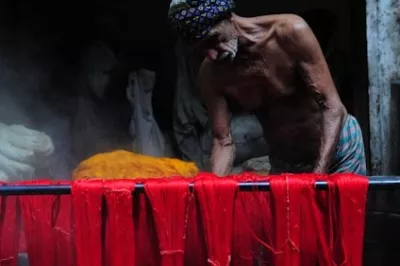Mobile Banking for Those with No Mobile
Safaricom’s M-Pesa is now so well known in the mobile banking world that it has come to be accepted by some as a blueprint for mobile financial services. The service relies on the phone in the hands of the customer (now more than 12 million) to perform transactions and the phone in the hands of the agent (all 20,000 of them) to credit and debit accounts. But in markets that have either lower penetration of mobiles or higher fragmentation among operators, offering over-the-counter (OTC) payment services may be an important alternative, or additional, strategy.
In Pakistan, CGAP’s partners Tameer and Telenor deliberately decided to take a two phase approach in the roll out of EasyPaisa. They gave agents the phone first and trained them to process OTC transactions, so that they would become comfortable with the service. The customer didn’t need to have a phone at all to transact at the agent, but they would get an SMS receipt if they did. Six months later they launched the mobile wallet which allowed customers with a Telenor phone to have their own account hosted on their personal phone. But one year after launch the OTC service has been such a huge success that it accounts for the vast majority of transactions and revenues.
In the Philippines where Globe’s GCASH service is approaching its sixth year of operations, Globe has taken almost the reverse approach. In the early years they focused on the mobile wallet to drive usage among “early adaptors”. Later they offered OTC “cash pick-up” for the “laggards” and they are now heavily marketing the domestic remittance service – GCASH Remit. With the recent approval of a network based license, allowing e-money issuers to be fully responsible for ensuring customer protection and compliance with the regulations, GCASH has scaled their agent network to 18,000 CICOs (cash-in and cash-out points) where OTC transactions can be carried out. GCASH Remit is available to the whole population including their competitors’ customers and those that don’t have a phone at all (not to mention people that have a phone, but are just not confident in using it for complex new services).
What are the lessons that other mobile operators might learn from these two cases? Firstly, allowing OTC transactions might be a useful way of building customer trust in a system and in the long-run help to increase the woefully low activation rates that many MNOs are experiencing. Secondly, OTC services could provide an additional revenue stream. And thirdly, the fact that any customer can use the service makes it de-facto “interoperable” and of more interest for the disbursement of large scale payments such as salaries, government payments or international remittances. For example, the Governments of both Pakistan and the Philippines are actively exploring whether the agent networks of EasyPaisa and GCASH agents could be used to distribute government payments to the very poorest members of the population – who are very unlikely to have their own phone (the figure is 8% among beneficiaries in the Philippines).
Some mobile banking purists might question whether providing the ability to conduct OTC services really constitutes “financial services” or even see this as a step backwards, reducing the incentives for customers to open their own mobile account. But in their rush to roll out mobile banking services to their existing customers, MNOs may have missed an opportunity to leverage their air-time distribution networks to provide a form of very basic financial services to the population – which could act as a stepping stone to the provision of a mobile wallet – not to mention providing additional revenues to both their agents and their own bottom line.
- Chris Bold




Comments
Hi Chris,
Hi Chris,
Couldn’t agree with you more. Take for example India where there is one airtime retailer in every 2 square KM of the country as compared to one bank branch in every 200 sq KM (approx). I think not reusing this “Reach” is preventing the country from creating “Magic” in the Financial inclusion space.
Take for example something as simple as access to Insurance products. Whether a customer pays for insurance through her own wallet or OTC through a retailer is irrelevant. However if paying OTC allows us to bring more rural folk under the ambit of insurance then that is already something good achieved.
Thanks for the interesting
Thanks for the interesting post Chris! You’ve probably already seen this, but GSMA was writing on this same issue earlier in the week. The claim there is that 45% of MTN Uganda’s revenues in Mobile Money are from transfers to unregistered users:
http://mmublog.org/global/how-significant-are-direct-revenues-to-profit…
Absolutely yes! The approach
Absolutely yes! The approach of OTC seems to be more reasonable and logical , as generating customer comfort level, familiarity with technology and ease along with financial literacy is important before pressing mobile button. That’s what is known as “assisted transactions” and it is the first step for use of mobiles in banking. similar approach is already being implemented in India by the largest branch-less banking entity FINO which touches more than 20 million customers in India.
Add new comment